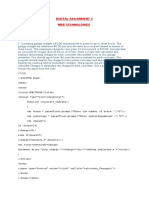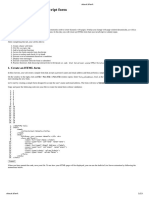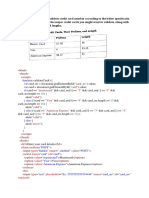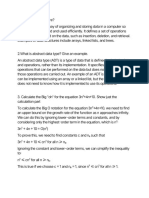0% found this document useful (0 votes)
19 views39 pagesWeb Essential Lab
The document outlines the vision and mission of the PERI Institute of Technology and its Computer Science and Engineering department, emphasizing quality education and industry readiness. It details program outcomes for engineering students, including knowledge application, problem analysis, and ethical practices. Additionally, it provides examples of projects such as creating interactive websites, form validation using JavaScript, and session tracking using hidden form fields.
Uploaded by
Mubeena QueenCopyright
© © All Rights Reserved
We take content rights seriously. If you suspect this is your content, claim it here.
Available Formats
Download as PDF, TXT or read online on Scribd
0% found this document useful (0 votes)
19 views39 pagesWeb Essential Lab
The document outlines the vision and mission of the PERI Institute of Technology and its Computer Science and Engineering department, emphasizing quality education and industry readiness. It details program outcomes for engineering students, including knowledge application, problem analysis, and ethical practices. Additionally, it provides examples of projects such as creating interactive websites, form validation using JavaScript, and session tracking using hidden form fields.
Uploaded by
Mubeena QueenCopyright
© © All Rights Reserved
We take content rights seriously. If you suspect this is your content, claim it here.
Available Formats
Download as PDF, TXT or read online on Scribd
/ 39























































































